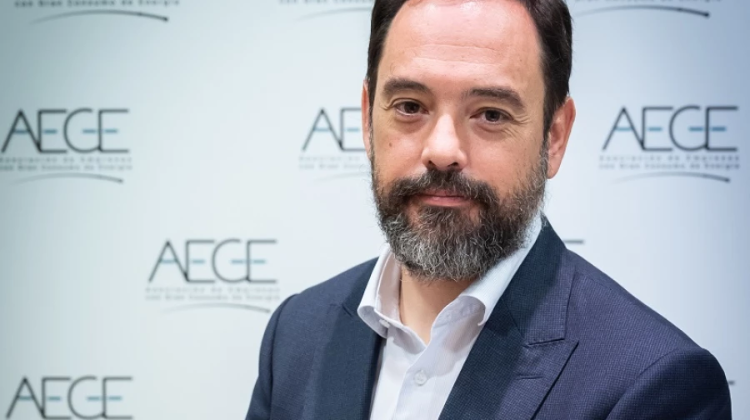The managing director of the Association of Energy-Intensive Companies (AEGE), Pedro González, confirms that the Government’s decision to support the claim of electro-intensive firms and order the retroactive application of the 80% discount on grid levies represents significant relief for industry, albeit limited in time.
It should be remembered that this measure, which originated in 2022 as a response to the gas crisis triggered by the war in Ukraine, had been repeatedly extended until it was repealed by Parliament in July, creating a regulatory vacuum that led some distributors to apply the discount while others refused.
In an interview with Strategic Energy Europe, González remarks: “Ultimately, the impact represents on average a 5% relief in the electricity bill we pay. It is an important measure that brings us a little closer in terms of competitiveness.”
Competitiveness lies at the heart of AEGE’s concerns, with the association arguing that, beyond this short-term relief, Spain’s cost structure is significantly higher than that of other EU countries.
According to the AEGE Energy Barometer, updated to July 2025, an electro-intensive consumer pays €63.41/MWh in Spain, compared with €23.77/MWh in France and €44.46/MWh in Germany. This means that Spanish industry faces prices 2.7 times higher than in France (+167%) and 1.4 times higher than in Germany (+43%).
The gap is largely due to Spain’s own systemic surcharges. “This unexpected surcharge is penalising us as well,” warns González. He refers to the impact of technical restrictions, which have increased fivefold in the past five years and, since the major blackout in April, have surged as a result of Red Eléctrica’s conservative operation mode, which curtails renewables and activates combined cycle plants to ensure stability.
As a result, the country is curtailing more and more renewable electricity – up to 5% of total generation – with costs passed directly onto consumers.
The rise in energy costs is also reflected in European statistics. According to Eurostat, Spain is the third EU country where electricity has risen the most in 2025, with a year-on-year increase of 17.3%, putting prices 35.4% above pre-pandemic levels and almost 94% higher than two decades ago.
The average industrial bill rose from €108.47/MWh in April to €133.97/MWh in July, a jump of 23.5%.
Added to this situation, the latest June 2025 report shows that corrected consumption fell by -0.6% in industry.
Against this backdrop, González underlines the crucial role of renewables in the transition to more competitive prices.
“We must move towards a system in which it is possible to seek price stability with renewables decoupled from the price of natural gas and CO2 in order to secure competitiveness,” he states.
At present, he explains, in 4 out of 5 hours the price is set by natural gas plus CO2, even with high shares of renewable generation, preventing industry from benefiting from the abundance of clean sources.
The director argues that the solution lies in long-term contracts with renewables, with stable and predictable prices, detached from fossil fuels.
However, he warns that current contracts are distorted by short-term surcharges, such as technical restrictions, which are known only ex post and undermine competitiveness.
Grid access
Alongside record levels of renewable curtailment, there are also grid access bottlenecks for consumers. González warns that many industries associated with AEGE are adapting processes to decarbonise, but cannot obtain the additional capacity they need due to saturation of connection nodes.
“If an existing industry asks you for more capacity, give it to them because you won’t be wrong,” he emphasises. He also criticises speculation in capacity applications and the role of storage, which, he argues, competes unfairly with industry for grid access.
AEGE’s analysis reflects an industry caught between market volatility and regulatory rigidity. The partial relief from the levy discount is not enough to offset a bill that remains among the highest in Europe.
If Spain is to recover competitiveness, the recipe rests on three pillars: reducing the fiscal burden on the electricity bill so as not to hinder decarbonisation; passing on to consumers the savings from the reduction in charges expected from 2028 without inflating them again to subsidise other technologies; and fostering competition in balancing services by incorporating renewables and demand.
In González’s words: “Let’s hope we have hit bottom and that from now on we will start to see better conditions, allowing a recovery in electricity demand through industrial consumption.”






























